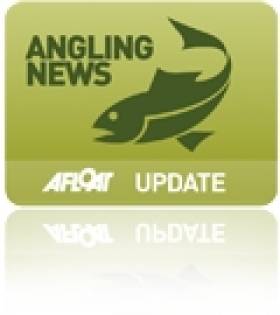Displaying items by tag: Migration
Osprey Migrating from Scotland to Spain Hitched Ride on Cargo Ships
Information has emerged as to how a young osprey tagged in the Scottish Borders hitched a ride on two ships during his first attempt at migration.
Conservationist Sacha Dench is part of a team tracking the bird to learn more about the species' behaviour.
She told BBC Radio's Good Morning Scotland programme how the osprey - called Glen - took his unusual route.
At one point it was feared he had died but he has now made it safely to Spain with the help of the two vessels.
Ms Dench - who was seriously injured in a crash which claimed the life of her cameraman in the Highlands last year - explained what happened to Glen after he left the Tweed Valley.
She said he had taken a "particularly unusual route" after his departure on 9 September.
For more including a map of the bird of prey's route across the Bay of Biscay, BBC News has the story.
Five People Found In Shipping Container In Wexford
#Shipping - Five people were found in a shipping container in Wexford at the weekend, as BreakingNews.ie reports.
The three men, a woman and a young girl, all believed to be Kurdish, were discovered at a haulage yard in New Ross on Sunday evening (16 October) in a container thought to have come in on a ferry from Cherbourg to Rosslare Europort.
Gardaí said the five, who were in good health, are being detained under immigration law — and are claiming asylum due to persecution in their home region.
According to TheJournal.ie, New Ross is also where nine Kurdish refugees were found in the back of a truck after stowing away on a ferry from France to Rosslare this past February.
Dress Up As A Fish For World Fish Migration Day
#Angling - A kids' contest for 'best fish costume' is among the events for all the family to mark World Fish Migration Day 2014 this coming Saturday 24 May.
World Fish Migration Day is a one-day global initiative, with local events worldwide, to create awareness on the importance of open rivers and migratory fish.
The ability of fish to freely migrate is crucial to achieve healthy fish stocks. While most fish are migratory to some degree, some species like those found in the Lower Shannon - Atlantic salmon, trout, sea lamprey and eel - migrate thousands of kilometres to complete their life cycles.
If they can’t migrate, the population will die out. And this has already happened with many species in different places around the world where barriers such as weirs, dams and sluices - built for water management, hydropower and land drainage - prevent fish from completing their life cycle.
Here in Ireland, MulkearLIFE and Inland Fisheries Ireland will host two events highlight the importance of fish migration on the Lower Shannon, with an emphasis on the Mulkear River Catchment and migration of Atlantic salmon and sea lamprey through the Annacotty Weir.
Early in the morning from 6am-8am there will be a live demonstration of sea lamprey successfully traversing the dedicated passes at the Annacotty Weir. The meeting point is the car park at the Mill Bar in Annacotty, Co Limerick. (Please not that this event is dependant on river conditions and the presence of lamprey in the system.)
Later in the day, the Mill Bar car park will host a family fun afternoon from 12 noon - with the aforementioned 'best fish costume' contest plus face-painting, live fish demonstrations and an excursion to Ballyclogh Weir on the Lower Mulkear - all with a view to helping children learn more about the importance of fish migration and healthy river ecosystems.
The Mulkear River, and the wider catchment, forms part of the Lower Shannon Special Area of Conservation and is the focus of the EU-funded MulkearLIFE project.
The day out on the Mulkear River is just one of almost 250 events around the world on World Fish Migration Day, starting in New Zealand and following the sun around the world till it sets in Hawaii.
The day is hoped to bring global attention for the need for open rivers and free routes for fish migration.
























